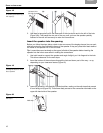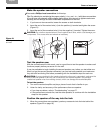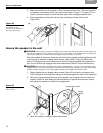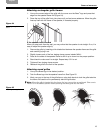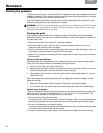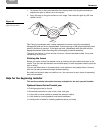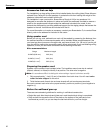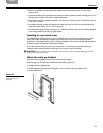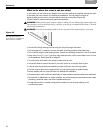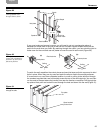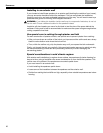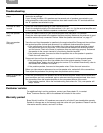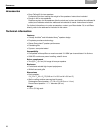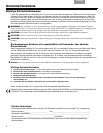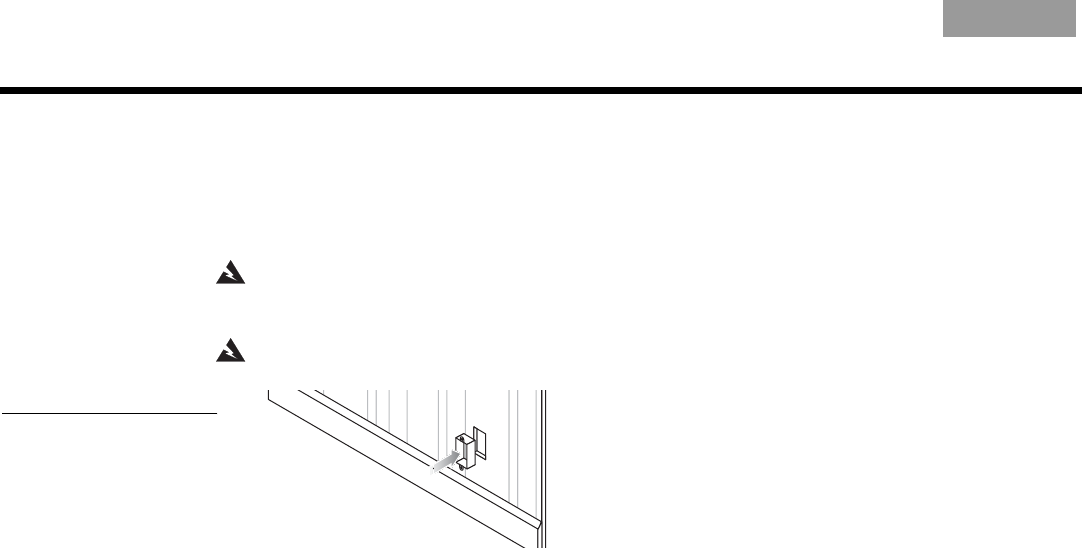
24
R
EFERENCE
EnglishFrançaisNederlands DeutschItaliano
What to do when the room is not pre-wired
In this case, you will need to run speaker cord from the receiver or amplifier through the wall
to the area you have chosen for installing the speakers. You will need to mount an
open-backed junction box in the wall near the receiver or amplifier (Figure 28).
You also need to observe safe and practical standards:
WARNING:
Make sure the spot chosen is safe for drilling. Do not drill through surfaces that may
have hazards, such as electrical wiring, conduits, or plumbing concealed behind them. Follow all
other safety precautions.
WARNING:
Consult local building codes to inform yourself of the requirements in your area.
Figure 28
An open-backed junction
box that allows cord to
come through the wall near
the receiver or amplifier
• Use a drill bit large enough for the cord you will pull through the holes.
• Use an auger bit, if possible, to make the work of drilling multiple holes less tiring.
• Do not drill through a load-bearing beam. Consult the building contractor if this is an issue.
• Keep cord 3 to 4 ft. (1 to 1.3 m) away from electrical cord, which can create a hum or buzz
in the speakers. See Figure 29 on page 25.
• To avoid nails, drill holes in the center of each stud or joist.
• Use a nail plate to protect the cord if your only option is to notch a stud or joist.
• Line up holes as perfectly as possible to make pulling the cord through easier.
• Pull the cord so there are no sags but do not pull tight enough to create tension.
Find the easiest path for cord that must run behind the wallboard:
• Choose interior walls, which are less likely to have insulation packed behind the wallboard.
• Use an attic or basement run where possible, so you have easy access and can see where
plumbing, electrical wires, and other impediments occur.
• In slab construction, consider using plenum-rated wire run through heating or air
conditioning vents.



